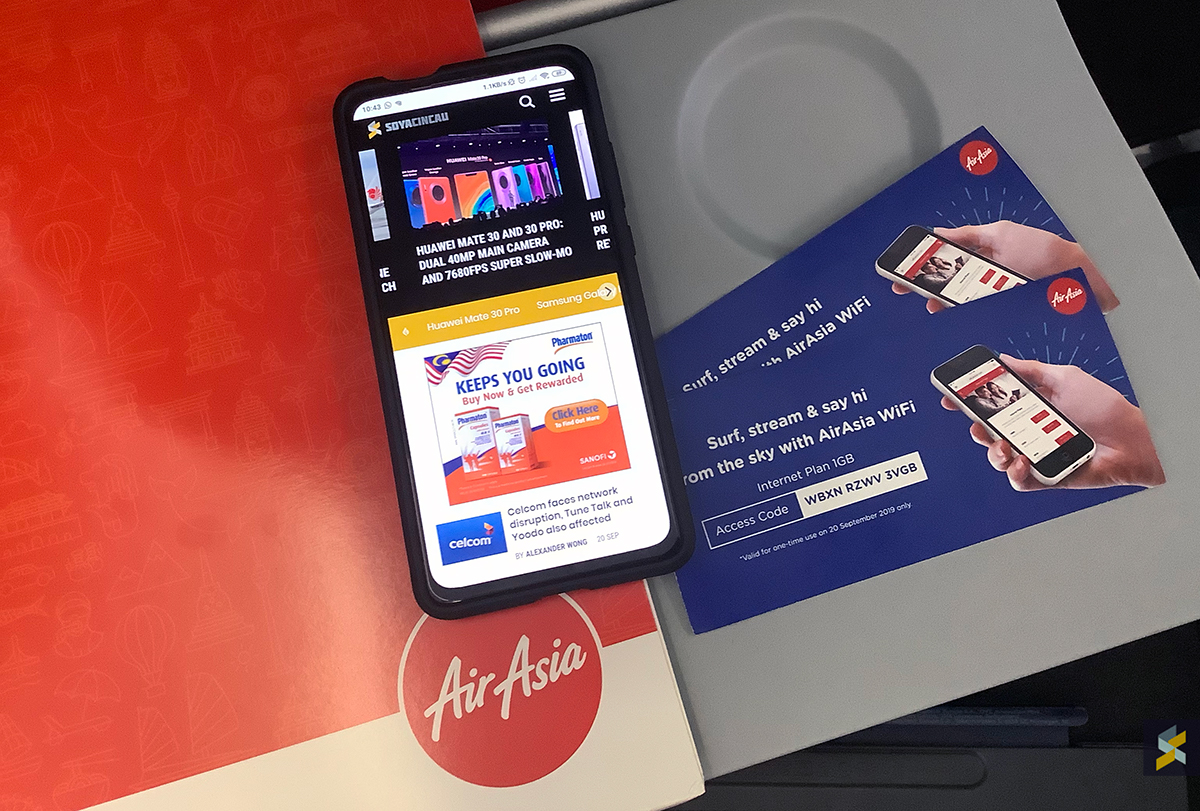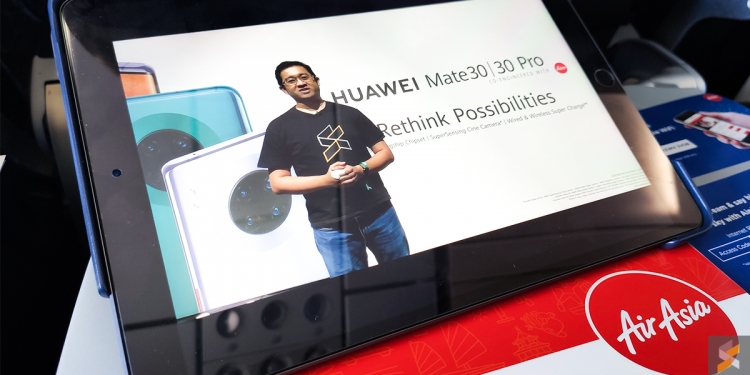AirAsia has upgraded its AirAsia Wi-Fi service, with 6 aircraft operated by AirAsia Malaysia having been upgraded to Ka-band frequencies for the inflight Wi-Fi network. The platform, GX Aviation, is provided by Inmarsat, a global mobile satellite communications company, and offers an improved experience as compared to the L-band frequencies that AirAsia Wi-Fi has utilised in the past.
To show off the new tech, we were invited along for a trip to experience the new Wi-Fi, along with the in-flight entertainment and connectivity (IFEC) system. This includes free content, including movies, music, and certain games that you can play via your mobile device. Unfortunately, the portal isn’t optimised for laptops at the moment, although you can technically still access the platform.
There’s also an e-commerce platform on the portal, which is part of how AirAsia wants to support local businesses. AirAsia Malaysia CEO Riad Asmat explained that for local SMEs, this gives them the opportunity to reach a wider audience, with the ability to have their products available to a regional, or even global market.
An improved experience for a wider range of tasks
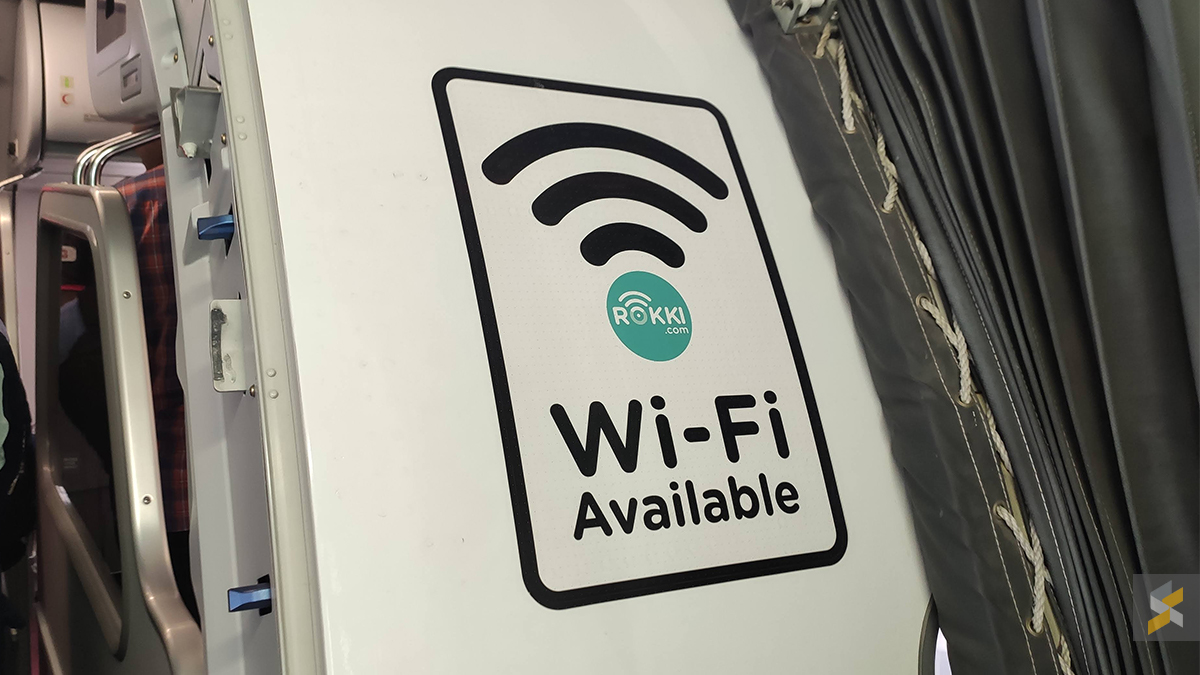
Essentially, Inmarsat’s GX Aviation technology, powered by ROKKI, allows for customers to enjoy a wider range of online tasks onboard their flights. In the past, L-band frequencies that airline Wi-Fi networks utilised were mainly good for simple messaging, or low data consumption tasks.
However, Ka-band networks allow for customers to stream videos on platforms like Netflix and YouTube, while tasks like video calls and live streaming are also very much possible. According to Riad Asmat, this is part of AirAsia’s focus on the future:
“This particular Ka-band is taking it another step. Live streaming, FaceTime, YouTube.”
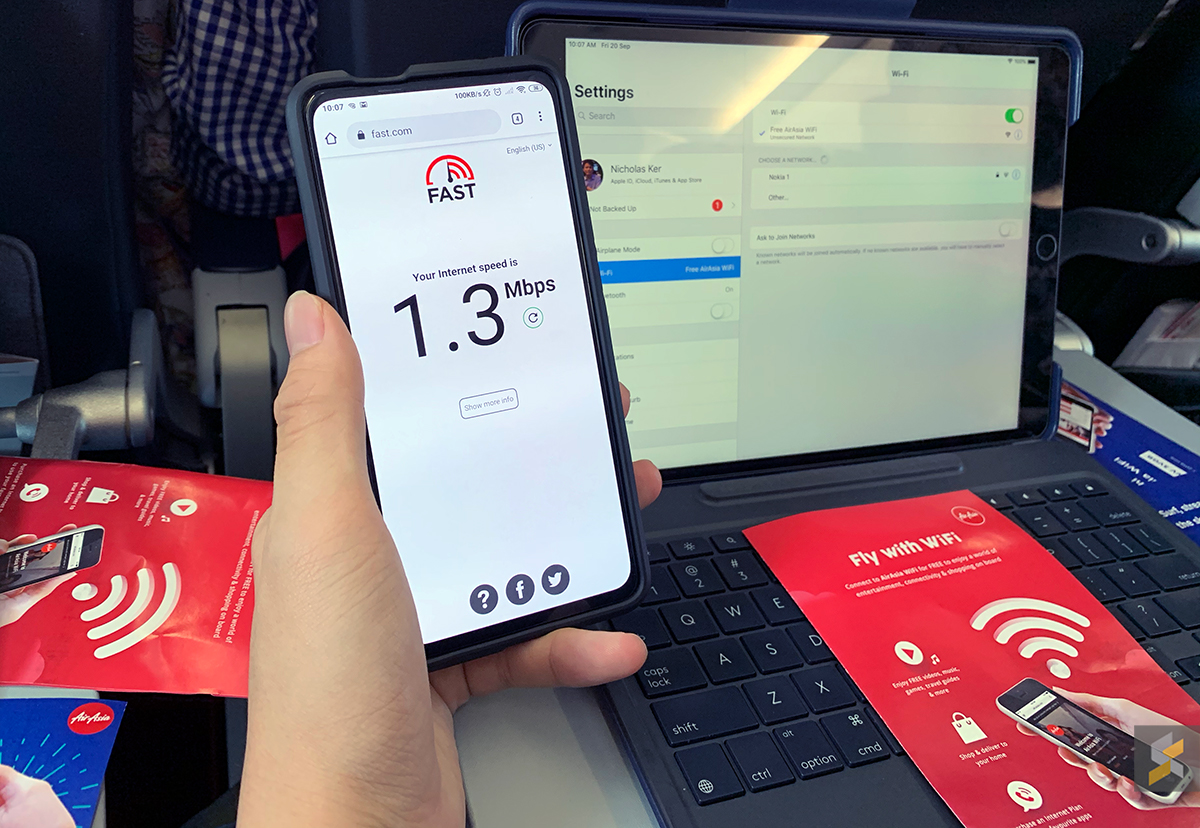
From my experience on the flight, I achieved speed test results of up to 1.3Mbps, which is only just about sufficient for the aforementioned tasks. A colleague managed to achieve a speed test result of 9.1Mbps, though, with varied results throughout the flight. However, stability was an issue, with the technology still in its early stages of implementation. I did manage to get videos streaming on YouTube pretty decently, and a video call on WhatsApp actually went relatively smoothly—all of which bodes well for the future.

Sargunan Seenivasan, ROKKI CEO, said:
“Before this, we only talked about messaging [on flights], but today, we gave a glimpse of what future services are coming.”
Chris Rogerson, of Inmarsat, went on to explain that they have 4 Ka-band satellites operating currently, with a 5th being launching this year. In addition to that, a satellite will be launched every year for the next 5 years. As for the benefits of using Ka-bands now, he explained that to the layman, the Ka-band platform is tailored for a better experience for data-heavy services, while the older L-band tech is mainly optimised for more restricted tasks like messaging.
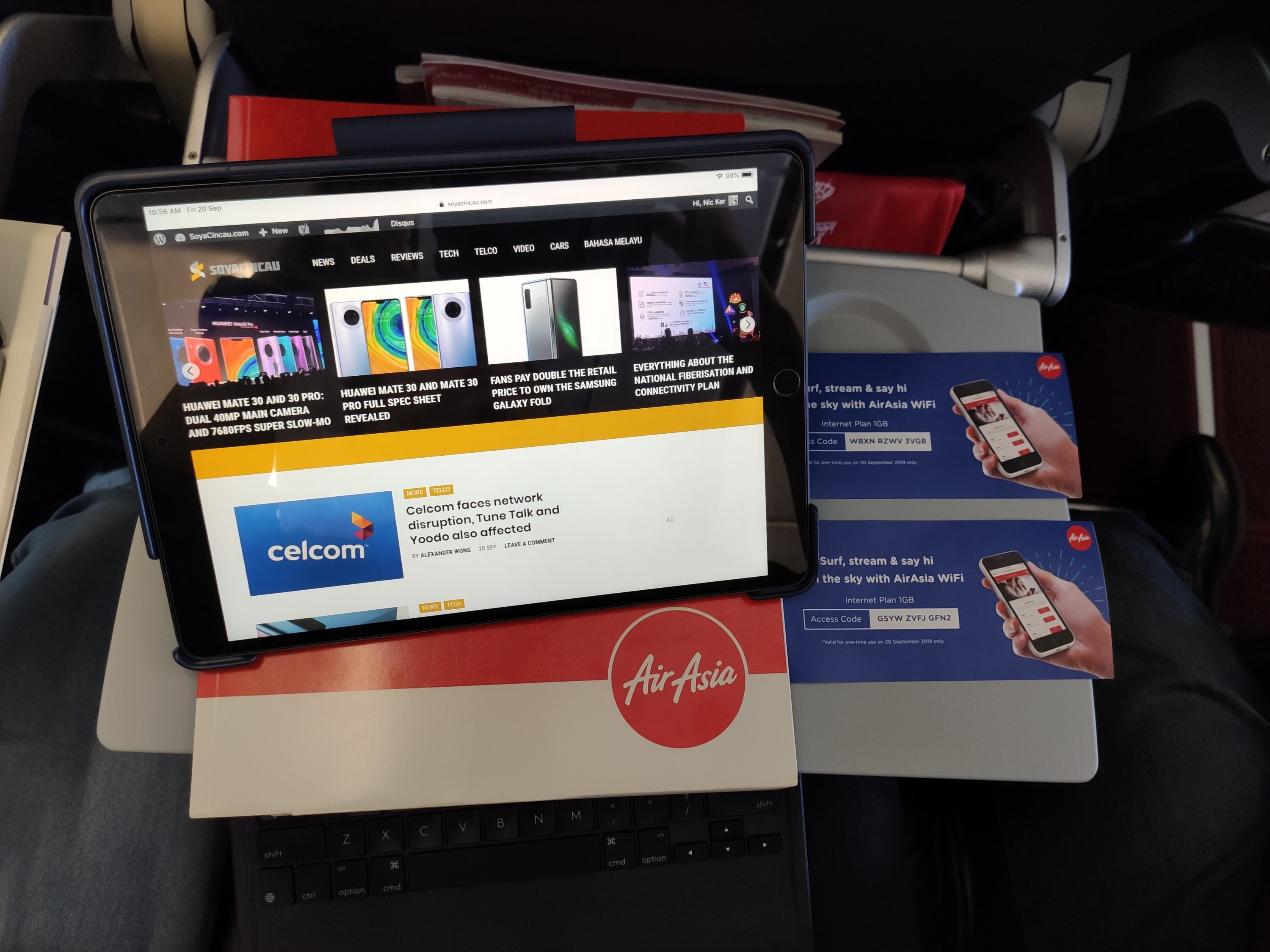
The goal, according to AirAsia, is to have the tech available on as many aircraft as possible. There are challenges, but the target is to have Inmarsat’s Ka-band platform (GX Aviation) installed onto the rest of AirAsia Malaysia’s fleet by the end of 2020. However, there isn’t a way to ascertain which flight is equipped with the tech right now, although the ROKKI-powered portal will notify you once logged on.
Currently, AirAsia is offering guests travelling on GX Aviation equipped aircraft a free 10MB trial for the month of September, with official pricing as follows:
| Internet Plans | Price | BIG Points redemption |
| 10MB | RM9 | 900 BIG Points |
| 20MB | RM18 | 1,800 BIG Points |
| 50MB | RM38 | 3,800 BIG Points |
| 100MB | RM48 | 4,800 BIG Points |
| 200MB | RM58 | 5,800 BIG Points |
